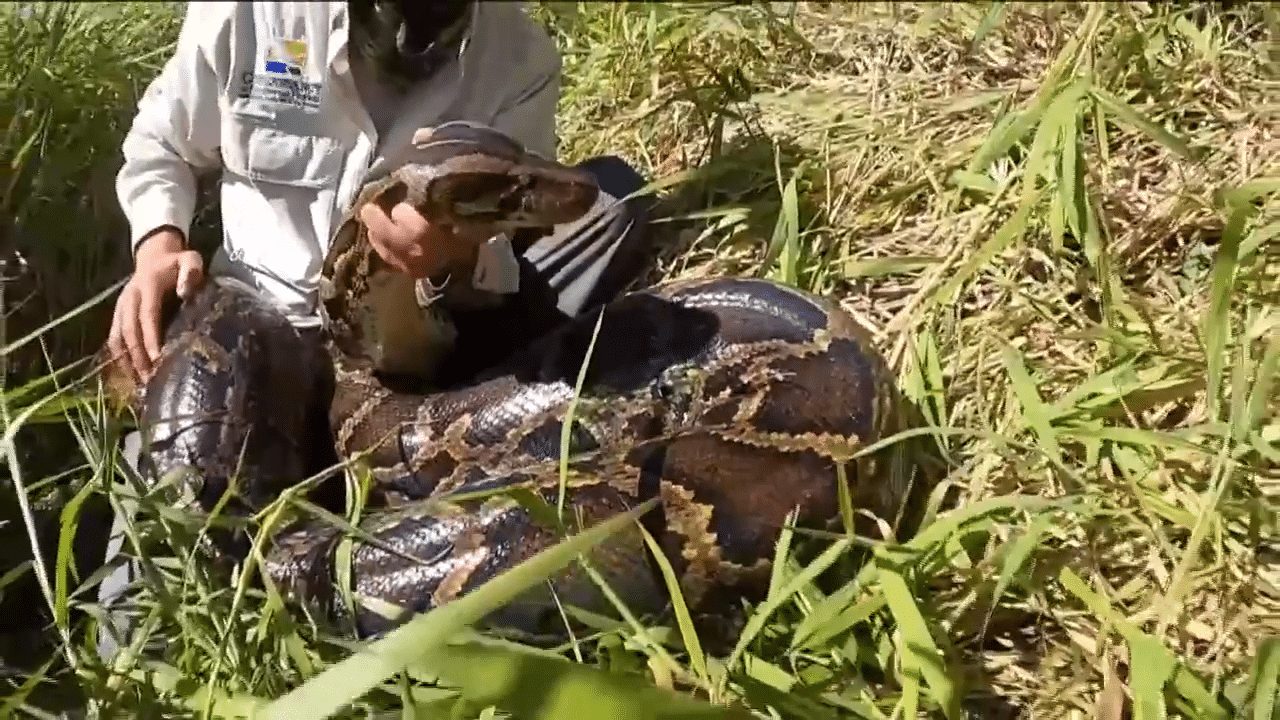Experts Warn of Increased Burmese Python Presence in Collier County
Introduction:
With its beautiful landscapes and diverse wildlife, Collier County in Florida has long been a haven for nature enthusiasts and animal lovers. However, a growing concern now threatens this delicate balance of nature. Experts have recently sounded the alarm about the increasing presence of Burmese pythons in the county, posing a serious threat to the local ecosystem and human safety. This article delves into the issue, highlighting the reasons behind the python invasion, its impact on the environment, and the urgent measures needed to address this problem.
The Invasion Begins: How Did Burmese Pythons End Up in Collier County?
In recent decades, the Burmese python, native to Southeast Asia, has become one of the most notorious invasive species in Florida. It is believed that the python invasion in Collier County began with pet owners releasing these reptiles into the wild. Due to their fast growth, large size, and aggressive nature, owners often find it difficult to handle or care for them, leading to their abandonment. The warm and humid climate of Florida provides ideal conditions for these snakes, allowing them to thrive and rapidly multiply.
Threat to Native Wildlife and Ecosystem:
The presence of Burmese pythons in Collier County has had a devastating impact on the native wildlife. These invasive predators not only compete with native species for resources, but they also prey upon them. Local populations of mammals, birds, and reptiles have significantly declined as a result. The eradication of several endangered species, such as the Key Largo woodrat and the eastern indigo snake, has been attributed to the python invasion. The delicate balance of the ecosystem is further disrupted as pythons upset food chains and disturb the natural ecological dynamics.
Human Safety Concerns:
Aside from the ecological effects, the Burmese python invasion also poses risks to human safety. While these giant constrictor snakes are generally elusive and non-aggressive toward humans, their sheer size and strength make them potentially dangerous. There have been reports of pythons attacking and suffocating small domestic pets, as well as instances where humans have been injured while attempting to handle or capture them. Moreover, the presence of large pythons near residential areas creates a sense of fear and unease among the local residents.
Combating the Python Invasion: Challenges and Novel Approaches
Controlling and eliminating a well-established invasive species like the Burmese python is a daunting task, but experts are working tirelessly to find effective solutions. Traditional methods, such as trapping and hunting, have proven to be insufficient due to the snakes’ elusive nature and vast distribution. To combat the invasion, innovative techniques are being explored, including the use of specially trained detection dogs to locate hidden pythons. These dogs can cover large areas quickly and accurately pinpoint the presence of these elusive snakes. Such novel approaches show promise in assisting ongoing efforts to remove and mitigate the python population.
Public Awareness and Education:
In addition to direct removal efforts, raising public awareness about the dangers of releasing pet pythons into the wild is crucial for preventing further spread. Education campaigns should focus on informing potential pet owners about the risks of invasive species and the importance of responsible pet ownership. Teaching proper snake handling techniques and offering resources for rehoming unwanted snakes can help reduce the number of pythons released into the wild and minimize further ecological damage.
Strengthening Regulations and Enforcement:
To effectively address the python invasion, it is essential to strengthen regulations and enforcement against the release of pet pythons. Stricter laws and penalties for individuals found guilty of abandoning captive pythons can act as a deterrent and reduce the number of snakes entering the wild. Furthermore, implementing programs for the responsible removal and relocation of pythons can ensure their safe capture and prevent them from causing further harm to the ecosystem.
Conclusion:
The increasing presence of Burmese pythons in Collier County poses a significant threat to the local environment and human safety. The eradication of native wildlife, disruption of delicate ecosystems, and potential risks to humans necessitate urgent action. Through a combination of public awareness campaigns, innovative detection methods, and stricter regulations, experts aim to control and mitigate the python population. By addressing this issue promptly and effectively, we can preserve the natural beauty and biodiversity of Collier County for future generations.




































